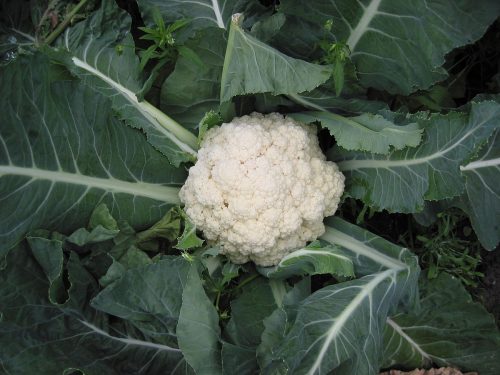Cauliflower belongs to the species Brassica oleracea, as do broccoli, kale and red cabbage. Caterpillars of Large white, Cabbage moth and Cyclamen tortrix, among others, prey on cauliflower.
You are viewing the mobile-adapted version of the page.
The one for tablets, laptop and desktop also provides general information, such as origin and cultivation.
Cauliflower belongs to the species (Brassica oleracea). Sow and propagate in a cold frame. In late May early June, the young plants can be planted in the open ground. Plants pre-sown in February can be harvested in late May, early June. Cauliflower sown in May and June in the open ground, is harvested in the fall.
Cauliflower, broccoli, kale and red cabbage are part of the plant genus Brassica and so there are similarities between them. They all love a good amount of manure and they are often attacked by snails and slugs, caterpillars (Large white) and the cabbage root fly.
Bugs
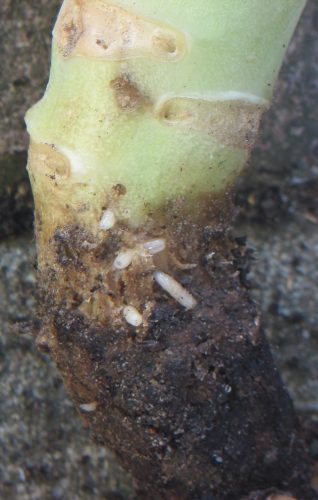
Poor growth; maggots in the root: Cabbage root fly (Delia radicum).
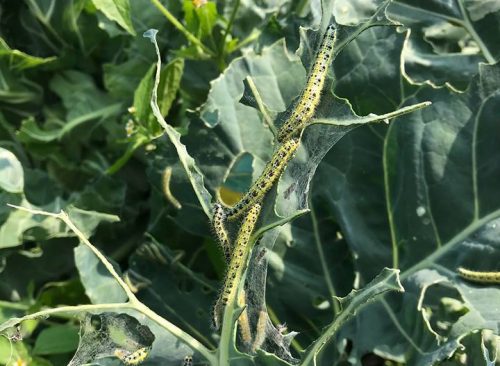
Leaf eating: caterpillars of Large white, Diamondback moth, Cabbage moth, Cyclamen tortrix.
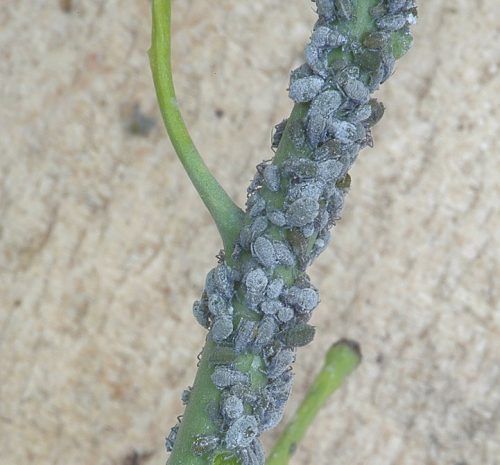
Initially white or purple spots on misshapen leaves (curled, bumpy), then the cauliflower is colonized by aphids: Cabbage aphid (Brevicoryne brassicae).
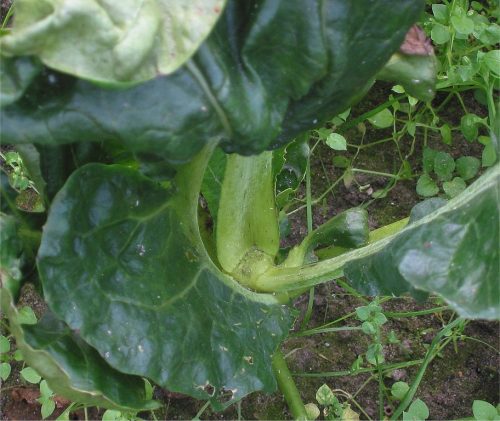
Twisting and distortion of the leaf stems and foliage leading to death of the growing point especially in seedlings: Swede midge (Contarinia nasturtii).
Curled leaves and damage to leaves, flower bud and stem: larvae of the Cyclamen tortrix (Clepsis spectrana).
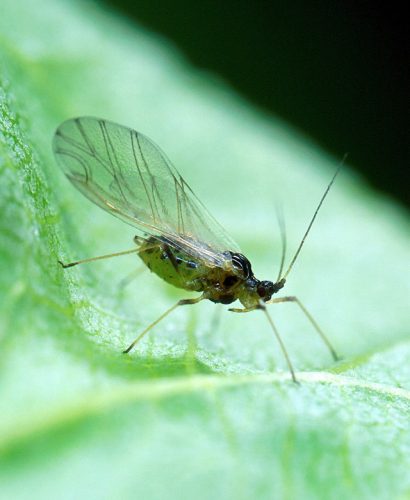
Curled leaves; in some places there is an aphid of about 2 mm in size: Green peach aphid (Myzus persicae).
Feeding on root or stem of young cabbage plant: the larvae of beetles (family Elateridae).
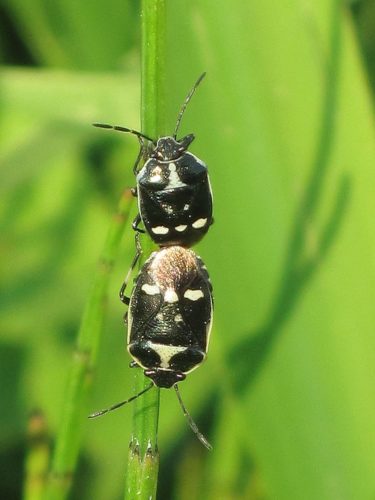
Feeding on young cabbage plants and young shoots by a black bug with three white dots: rape bug (Eurydema oleracea).
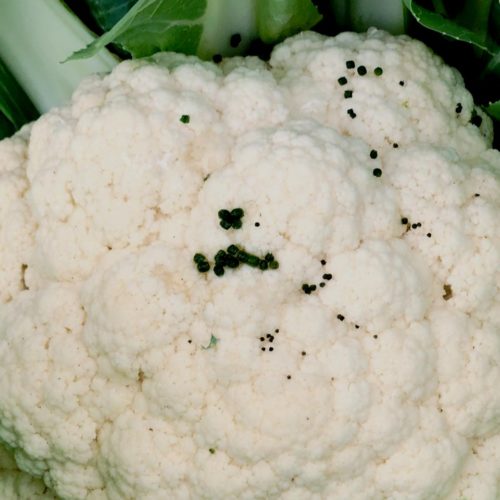
Green “globs” on cauliflower: poop from caterpillars. Can’t hurt, just rinse.
Fungi & diseases
Poor growth, plant wilting, swollen roots rotting away: Clubroot (Plasmodiophora brassicae).
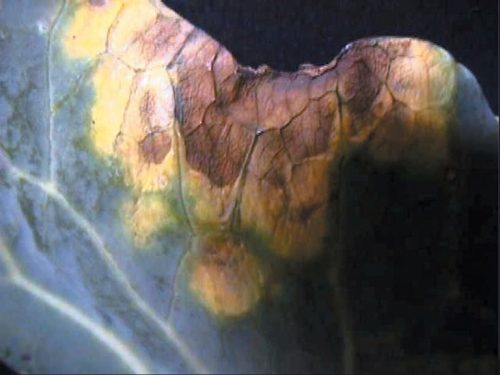
Large yellow, withered spots on leaves, veins turn black, followed by stem: Black rot (Xanthomonas campestris).
White fungal fluff on the underside of the leaves: Downy mildew (Peronospora parasitica). It usually involves the lower leaves because the fungus get onto the leaf by splashing rain. In powdery mildew (a species of Ascomycete fungi), the fluff is on the top of the leaves.
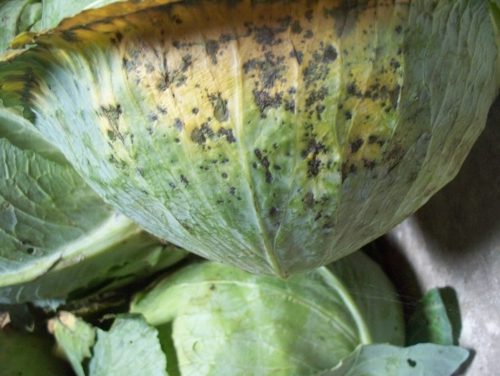
Black spots on cabbage: Alternaria leaf blight (Alternaria brassicae).
Other
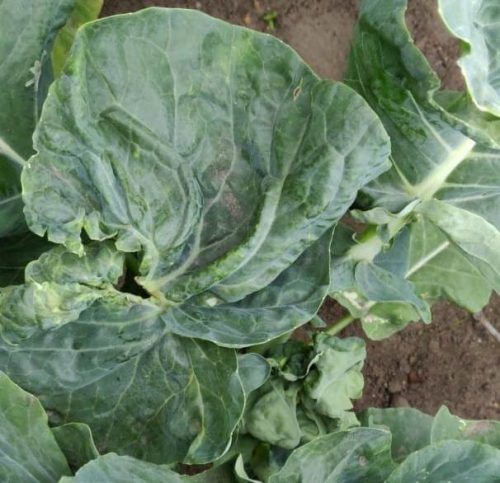
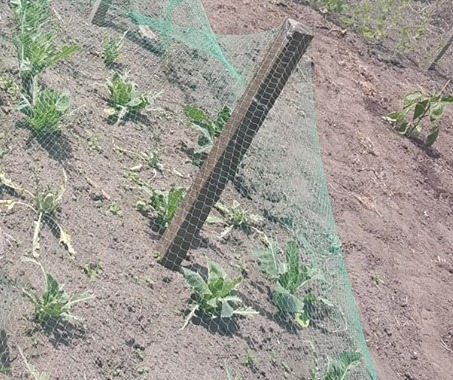
Pigeons eat the head or leaf from cauliflower.
Leaf margins turn brown: calcium deficiency.
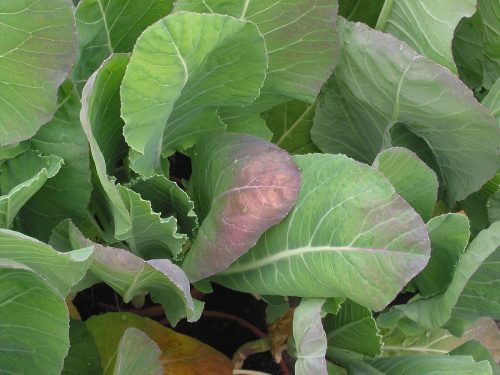
Lower (oldest) leaves turn purple: nitrogen deficiency.
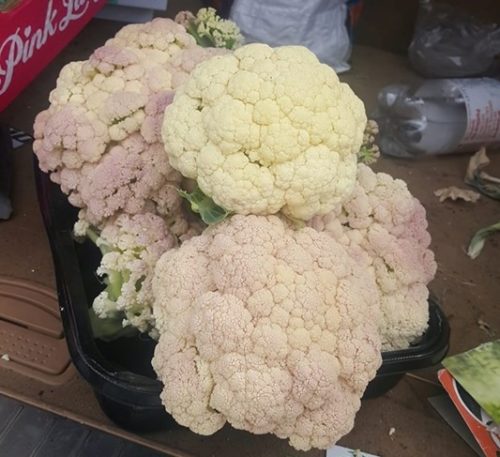
The cauliflower discolors under the influence of light: covering has been insufficient causing discoloration. That’s not bad at all; the taste does not change.

